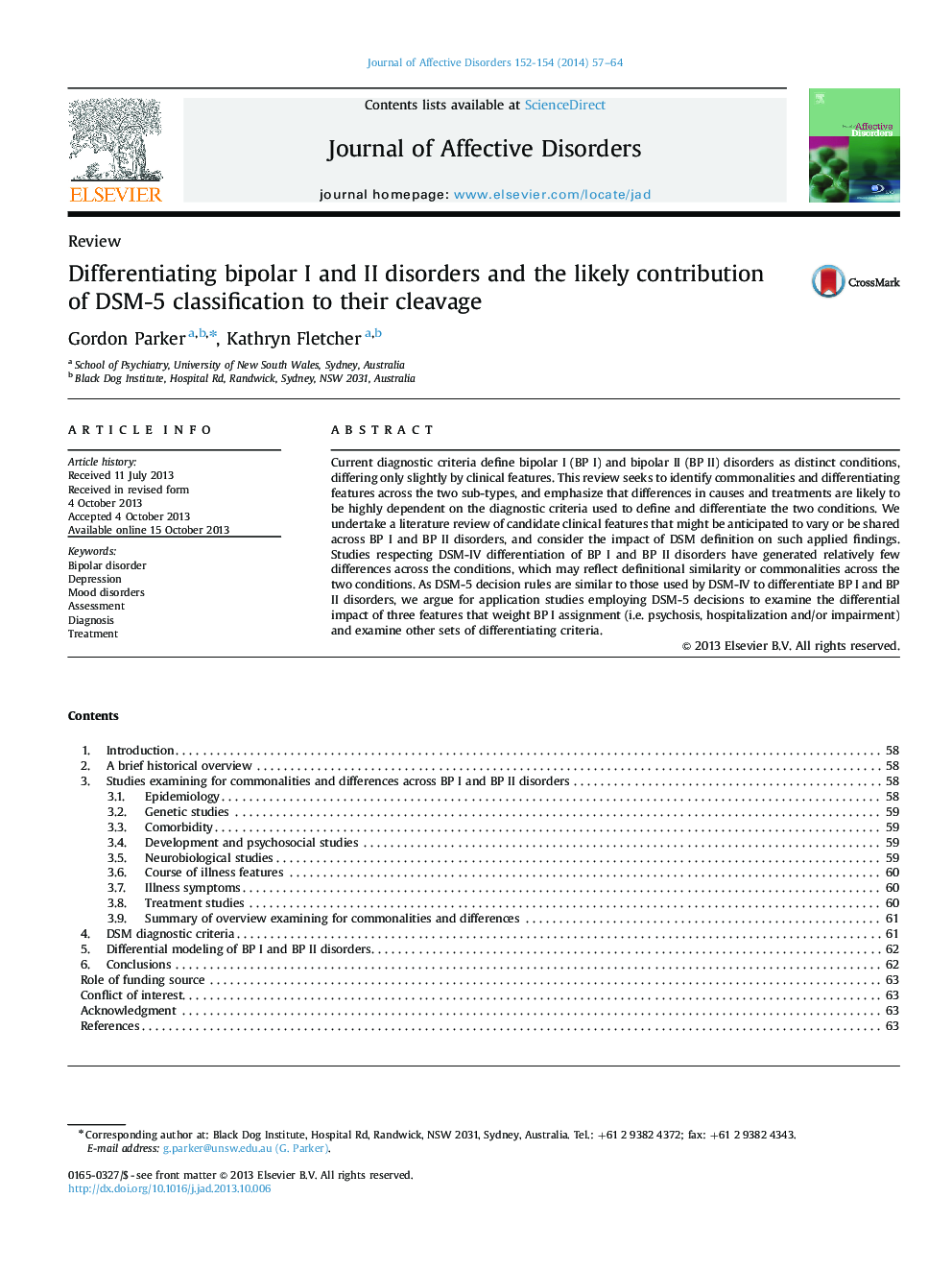| کد مقاله | کد نشریه | سال انتشار | مقاله انگلیسی | نسخه تمام متن |
|---|---|---|---|---|
| 6233097 | 1608171 | 2014 | 8 صفحه PDF | دانلود رایگان |

Current diagnostic criteria define bipolar I (BP I) and bipolar II (BP II) disorders as distinct conditions, differing only slightly by clinical features. This review seeks to identify commonalities and differentiating features across the two sub-types, and emphasize that differences in causes and treatments are likely to be highly dependent on the diagnostic criteria used to define and differentiate the two conditions. We undertake a literature review of candidate clinical features that might be anticipated to vary or be shared across BP I and BP II disorders, and consider the impact of DSM definition on such applied findings. Studies respecting DSM-IV differentiation of BP I and BP II disorders have generated relatively few differences across the conditions, which may reflect definitional similarity or commonalities across the two conditions. As DSM-5 decision rules are similar to those used by DSM-IV to differentiate BP I and BP II disorders, we argue for application studies employing DSM-5 decisions to examine the differential impact of three features that weight BP I assignment (i.e. psychosis, hospitalization and/or impairment) and examine other sets of differentiating criteria.
Journal: Journal of Affective Disorders - Volumes 152â154, January 2014, Pages 57-64